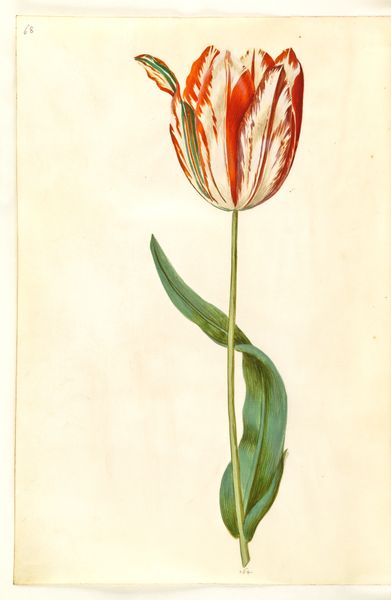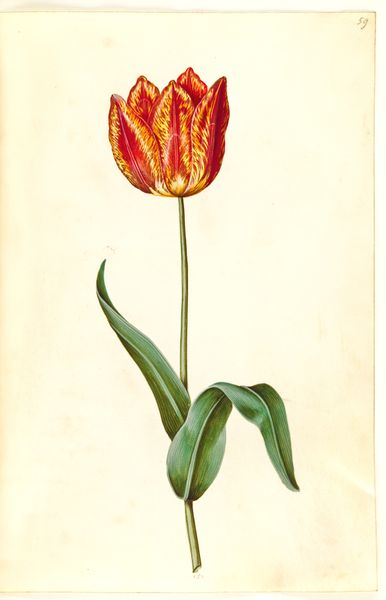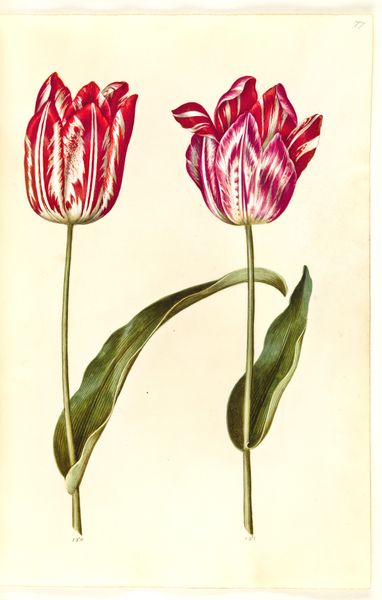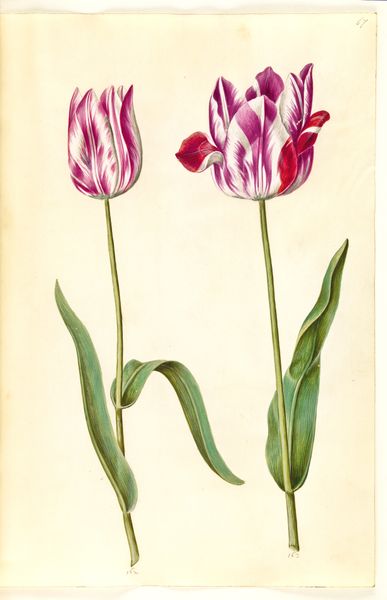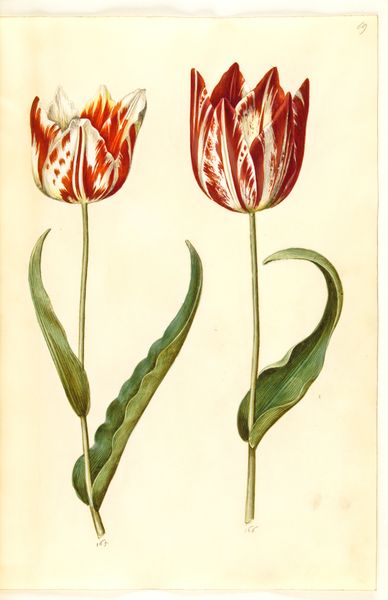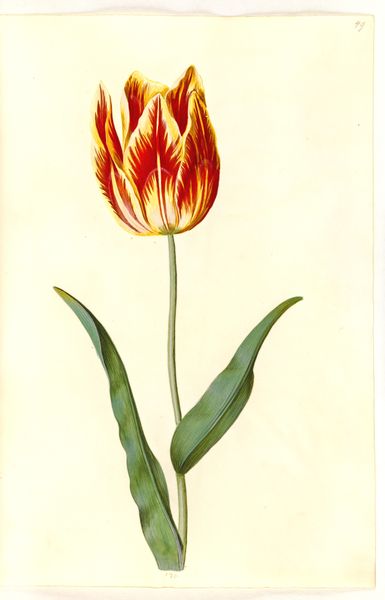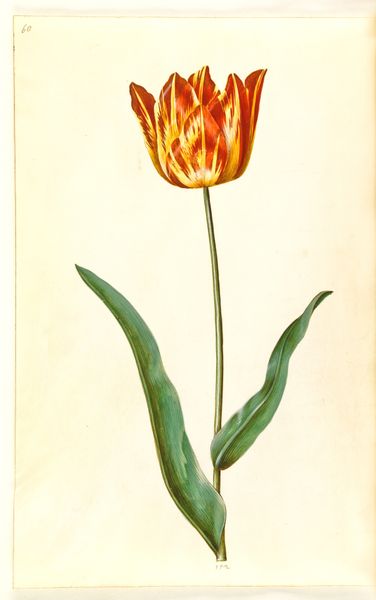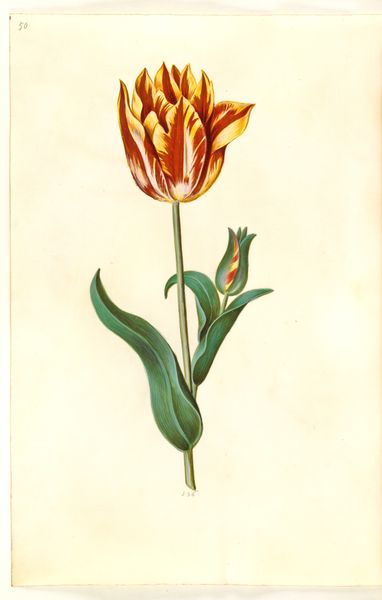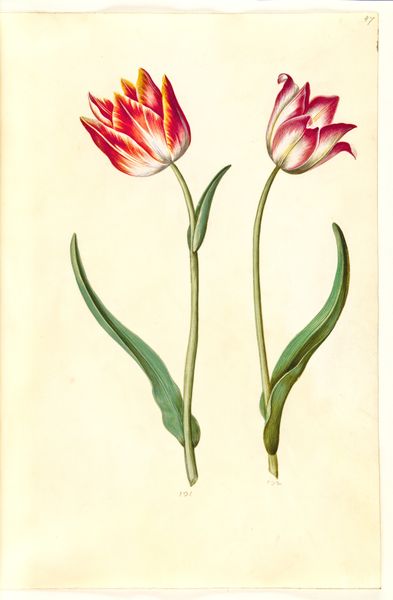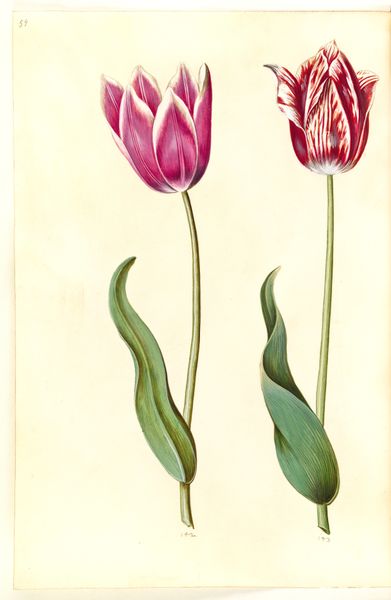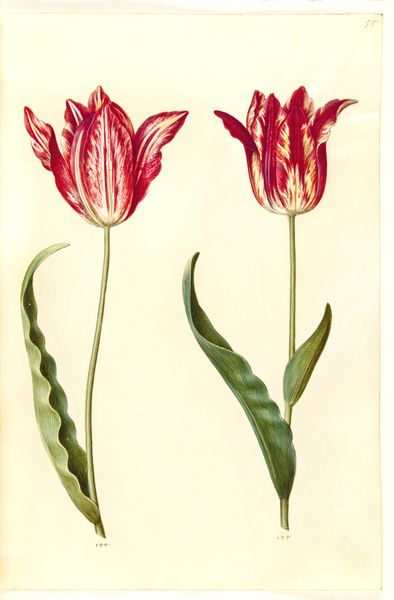
drawing, gouache
#
drawing
#
dutch-golden-age
#
gouache
#
botanical drawing
#
botanical art
#
realism
Dimensions: 375 mm (height) x 265 mm (width) x 85 mm (depth) (monteringsmaal), 358 mm (height) x 250 mm (width) (bladmaal)
Hans Simon Holtzbecker made this botanical study of a ‘have-tulipan’, or cultivated tulip, on paper in Denmark in the 17th century. The image captures the flower's elegant form and striking red and white striations. Consider the tulip craze of the Dutch Golden Age, where rare bulbs commanded exorbitant prices and became symbols of wealth and status. Holtzbecker's delicate rendering is likely more than just scientific observation. The presence of a tulip in a Danish royal collection at this time reflects the cultural and economic exchanges happening across Europe, and the way that botanical knowledge was becoming both a science and a status symbol. To truly understand the meaning of this image, we need to delve into the economic and social history of the period, using sources such as trade records, botanical treatises, and estate inventories. This art gives us a window into the complex relationship between art, science, and social status.
Comments
No comments
Be the first to comment and join the conversation on the ultimate creative platform.
